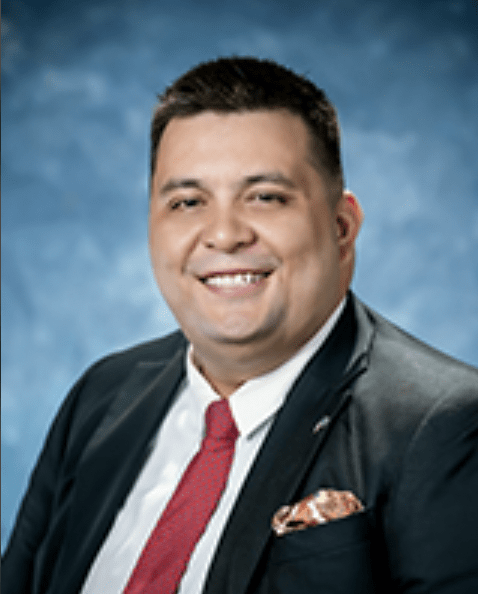The Guam governor is initiating the first substantial update to the government of Guam’s Drug Free Workplace Policy in 30 years. The review, which she ordered last month through executive order, is meant to align the policy with statutes over the past decade that have decriminalized cannabis use and have prohibited employers from disciplining employees for using cannabis outside of working hours. The policy that has been in place the past three decades directly contradicts the anti-discrimination law, which was enacted July 22, 2024 through legislation by William Parkinson.
In allowing that legislation to lapse into law, Lou Leon Guerrero warned senators that a portion of the law does not provide enough clarity to allow employers to discipline employees who are high on cannabis while working. Proponents of the anti-discrimination statute, Public Law 37-119, said the new law is only meant to prohibit discriminating against employees who use cannabis outside the workplace. During the public hearing on the Parkinson legislation, several who testified said that the law would not prohibit employers from disciplining employees who are actively high at work.
 “The intent of the legislation is to not penalize employees for off-work use, but the language of subsections (f) and (g) may complicate the ability of employers to investigate and deter on-the-job use,” Ms. Leon Guerrero wrote in her letter informing senators P.L. 37-119 lapsed into law. “This vague language would tie the hands of employers whose employees’ conduct evidences cannabis use while on the job. Although there were substantial comments indicating the intent of Bill 6-37 was not to prevent employers from penalizing on-the-job use, the language of subsections (f) and (g) does not clearly distinguish that.”
“The intent of the legislation is to not penalize employees for off-work use, but the language of subsections (f) and (g) may complicate the ability of employers to investigate and deter on-the-job use,” Ms. Leon Guerrero wrote in her letter informing senators P.L. 37-119 lapsed into law. “This vague language would tie the hands of employers whose employees’ conduct evidences cannabis use while on the job. Although there were substantial comments indicating the intent of Bill 6-37 was not to prevent employers from penalizing on-the-job use, the language of subsections (f) and (g) does not clearly distinguish that.”
She then noted her administration will work with the legislature to correct the concerns she raised. Enter Executive Order No. 2025-03, promulgated by Ms. Leon Guerrero on February 18, 2025.
“The Department of Administration (“DOA”) shall undertake a comprehensive review of its existing Government of Guam Drug Free Workplace Policy, and develop and draft a new Drug Free Workplace Policy to comply with existing Guam law and this Executive Order,” the governor ordered. “The new Drug Free Workplace Policy shall be submitted to the Governor for approval within 180 days of the issuance of this Executive Order.”
“[T]he new Drug Free Workplace Policy will continue to expressly prohibit the use of intoxicating or hallucinogenic substances, including cannabis, in any Government of Guam work site,” Ms. Leon Guerrero commanded.

Mr. Parkinson believes that, just like the governor, private sector employers can institute policies that will prohibit employees from being high on the job.
“I don’t think at this time additional legislation is necessary,” the senator said. “It is my belief that the private sector already has the tools to address post employment testing if someone is high on the job. I think the spirit of the law is clear, it does not protect anyone who is high on the job and I’m committed to doing what it takes to ensure clarity and consistency between the public and private sector.”
Among the mandates of the executive order are that any GovGuam employee “may be tested based on probable cause for the presence of alcohol and the psychoactive metabolites of cannabis.” Possession of the drug in the workplace will continue to be prohibited.
The GovGuam Drug Free Workplace Policy
The current government policy related to illegal drug use states applicants selected for GovGuam employment must undergo and pass a urine drug test. Once employed, their supervisors can initiate drug tests on employees randomly, for cause, following an accident or unsafe workplace event, with the voluntary consent of the employee, or as a follow-up to counseling or rehabilitation initiated as a result of an employee seeking safe harbor for drug use prior to a positive test result.
The 1995 policy names cannabis as a prohibited narcotic for which an employee can be disciplined for a positive test result.
The 2024 law makes it illegal for employers to discipline employees for simply testing positive for cannabis. The law, according to Mr. Parkinson, is meant to leave it to employers to determine what to do with employees who are found to be high on cannabis at work.
How Can An Employer Tell Between Someone Who Used Cannabis the Night Before, and Someone Who Is High On the Job?
Unlike tests for alcohol inebriation, measuring impairment from cannabis’ psychoactive effects on the body cannot be determined by breath or urine test, according to OraSure Technologies, the Insurance Information Institute, and Australia Drug Testing. This is due to a number of factors to include what is called the ‘window of detection,’ whether the person tested is a casual user or a heavy user with more tolerance to the psychoactive effects, and other physiological variances among users.
“We found that impairment is much more predictable in occasional cannabis users than regular cannabis users. Heavy users show significant tolerance to the effects of cannabis on driving and cognitive function,” Thomas Arkell, Lambert Initiative and co-author of THC research at the University of Sidney, “while typically displaying some impairment.”
“THC can be detected in the body weeks after cannabis consumption, while it is clear that impairment lasts for a much shorter period of time,” says Iain McGregor, the academic director of the Lambert Initiative. The quote comes from an article in Cosmos by Ellen Phiddian.
Rather than using breath or urine tests, which only will prove usage, OraSure Technologies advocates the use of oral or saliva rapid testing to help determine cannabis impairment, as the results of the test can show the amount of cannabis present in a person as the number of hours from usage passes.
“Saliva, a fluid that originates from the blood, is the key component of oral fluid. Therefore, oral fluid contains whatever drug/metabolite is present in the bloodstream, making it scientifically possible to refer to oral fluid testing as a true recent-use detection drug testing method,” an OraSure newsletter from March 2022 states. “This form of drug testing is ideal for use in states that have legalized marijuana, especially for random, post-accident, reasonable suspicion, fitness-for-duty, and pre-employment drug testing situations.”
“Oral fluid testing will produce positive drug test results for more people who are actually impaired by marijuana on the job, and it will also produce positives for all the other commonly abused and impairing drugs such as opioids, amphetamines, heroin and cocaine,” the OraSure literature states.
Australia Drug Testing, in an online publication, details the same concerns about the ability to determine cannabis impairment due to a variety of physiological factors. The organization’s literature agrees with the OraSure information about the oral or saliva test, and describes the simple procedure.
“Saliva drug testing involves collecting a saliva sample from an individual, typically using a swab placed inside the mouth. The sample is then analysed for the presence of drugs, such as THC,” the Australia Drug Testing online publication states. “The process is straightforward and can be performed almost anywhere, making it a convenient option for various applications.”
High level detection of cannabis through the saliva test, coupled with factors that can be observed such as impaired behavior and the pungent odor of cannabis can lead to a determination of cannabis impairment in the workplace, according to the three sources.








